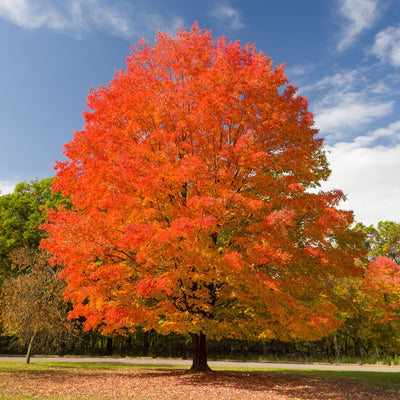The Benefits and Uses of Sugar Maple Trees in Landscape Design
The Benefits of the Legacy Sugar Maple
Legacy Sugar Maple is a dense deciduous tree with a shapely oval form. Its texture blends into the landscape but can be balanced by one or two finer or coarser trees or shrubs to contrast and emphasize its size. It has an open center of silver-white to pale cream coloration in early spring, darkening gradually to yellow-greenish green by late summer. In fall, it turns uniformly gold-brown before losing its leaves.
When mature, this maple may reach up to 30 feet (9 m), though typically less than 20 feet (6.1m). The winter buds are white or pink when young, becoming brown as they age. Legacy Sugar Maples resist black knot disease and other fungal diseases that plague sugar maples. These maple species have been used as ornamentals since their introduction from America around 1670.
The Legacy Sugar Maple is used for expansive tree lawns, screens, hedges, and foundation plantings. It is also used as a shade tree and windbreak. This tree is adaptable and well-suited for use in urban settings where pollution and heat stress are common problems.
The Legacy Sugar Maple is a popular choice for street trees because of its resistance to Pests and Diseases.
The Legacy Sugar Maple is a hardy tree that will grow in most climates. It is drought tolerant once established. It grows best in full sun but does tolerate partial shade. A minimum soil pH of 5 is necessary; a slightly acidic pH is preferred. Perennial weeds should not be allowed near planted Legacy Sugar Maple trees.
Fertilizing after bloom is recommended every three years to help keep the tree healthy and prevent weed growth.
While Legacy Sugar Maples require some water during the growing season, excessive dryness promotes disease. Soils high in organic matter provide sufficient moisture for good root development, while excessively wet soils encourage rot.

